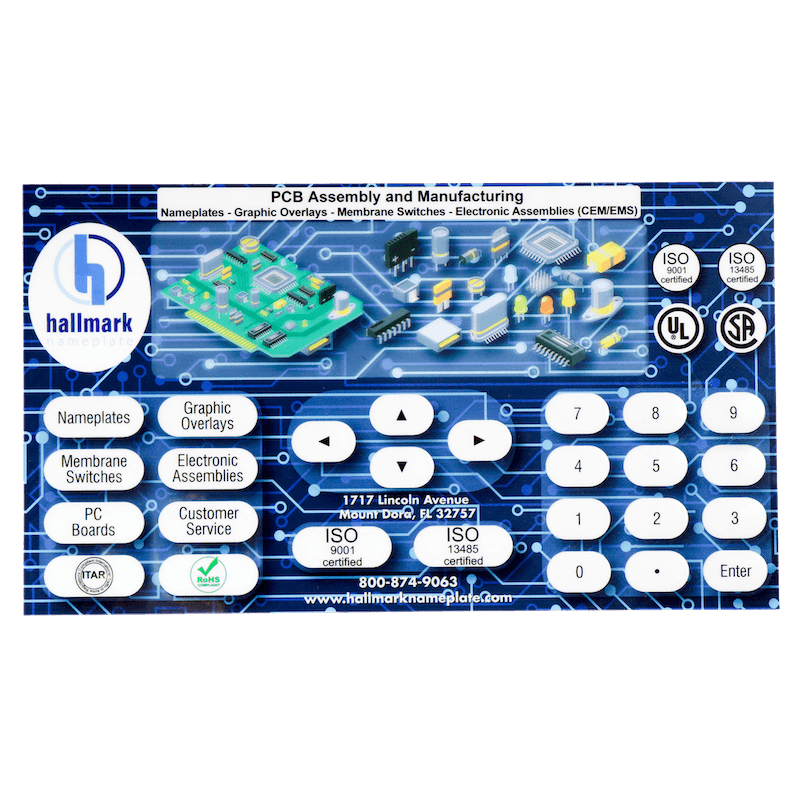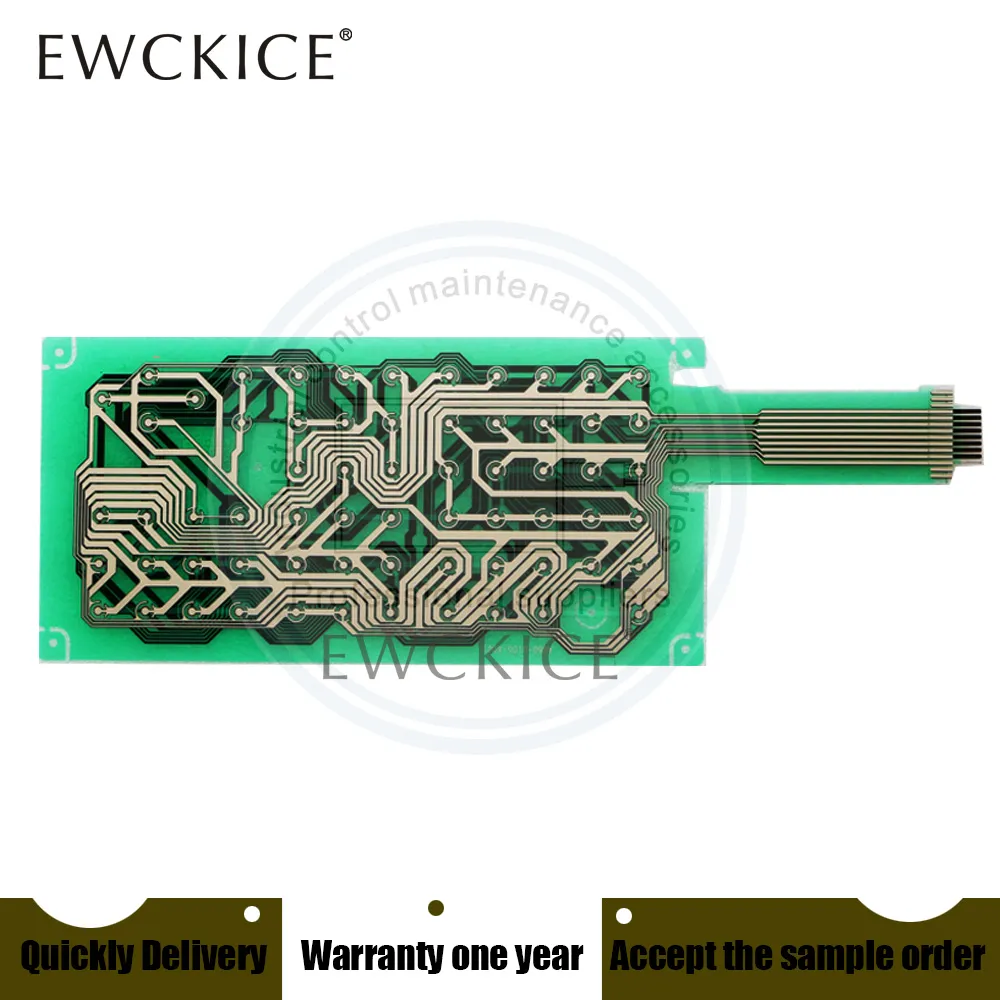The Role of Membrane Switches in Enhancing Device Functionality
The Role of Membrane Switches in Enhancing Device Functionality
Blog Article
Recognizing Membrane Changes: The Key to Long Lasting and Dependable Controls

What Are Membrane Switches?
Membrane switches are an advanced remedy in the world of user interface innovation, incorporating capability and layout seamlessly. These devices function as an interface between individuals and electronic systems, integrating a number of elements into a small style. Normally created from adaptable, slim layers of products, membrane switches are developed to react to touch, enabling users to communicate with machinery and electronic devices effectively.
The key aspects of a membrane switch include a printed circuit layer, visuals overlay, and a spacer layer that protects against unplanned activation. The visuals overlay can be personalized to show brand identity or customer choices, improving appearances while making certain functionality. Membrane switches are generally made use of in different applications, including clinical gadgets, consumer electronics, and commercial devices, owing to their resilience and resistance to environmental variables such as wetness and dust.
Among the crucial advantages of membrane layer buttons is their ability to hold up against damage, making them optimal for high-traffic environments. In addition, they are lightweight and require very little space, enabling ingenious designs in item development. On the whole, membrane switches over represent a practical and reliable option for modern-day electronic user interfaces, marrying modern technology with user-centric design concepts.
How Membrane Layer Changes Job
The procedure of membrane layer switches over joints on an easy yet effective mechanism that equates individual input right into digital signals. When a user presses the switch, the top layer warps, permitting a conductive component in the circuit layer to make contact with a corresponding conductive pad on the underside of the graphic overlay.
The style of membrane layer buttons can differ, yet they typically incorporate domes or tactile aspects to supply responses to the customer, boosting the overall experience - membrane switch. The materials used in membrane switches, such as polyester or polycarbonate, add to their sturdiness and resistance to environmental aspects, consisting of wetness and dirt. The published circuits are normally enveloped, which secures them from wear and tear over time.
Benefits of Membrane Switches

In addition, membrane layer buttons are known for their sturdiness. Built from durable products, they are resistant to dust, wetness, and physical wear, which substantially expands their life-span contrasted to typical mechanical buttons. This longevity makes them specifically ideal for high-traffic settings and applications calling for long life.
An additional considerable advantage is the simplicity of cleaning and maintenance. The smooth surface area of membrane layer switches over lessens dirt build-up and is commonly unsusceptible spills, making them optimal for settings that require constant sanitization.
In addition, membrane layer switches provide a streamlined account, causing a thinner style that can be integrated right into numerous gadgets without adding mass. This function not only enhances the visual charm but additionally adds to a much more ergonomic product layout.
Applications of Membrane Switches
Functional and easy to use, membrane layer switches locate applications across a variety of markets, including clinical devices, customer electronics, and commercial devices. In the medical area, these switches are indispensable to gadgets such as diagnostic devices, patient surveillance systems, and infusion pumps, where integrity and simplicity of cleaning are important. Their capability to maintain and hold up against severe settings performance makes them ideal for such applications.

In consumer electronic devices, membrane layer switches are utilized in products like microwaves, washing makers, and remotes - membrane switch. Their streamlined style enables instinctive interface, enhancing the general customer experience while providing toughness and resistance to tear and wear
Industrial tools also gains from membrane buttons, specifically in control panels for equipment and automation systems. These switches provide security versus dirt and dampness, guaranteeing constant efficiency in tough atmospheres. Their personalized features permit suppliers to customize them to specific operational needs, enhancing efficiency and functionality.
Choosing the Right Membrane Layer Switch Over
When picking Recommended Reading a membrane layer button, it is important to take into consideration numerous variables that affect performance and suitability for specific applications. The primary factors to consider consist of environmental conditions, tactile responses, longevity, and layout specs.
First, examine the operating atmosphere; switches revealed to dampness, chemicals, or extreme temperatures call for certain materials to ensure longevity and capability. Next off, assess the need for responsive comments. Depending on user communication, some applications may benefit from a responsive action to confirm activation, while others might like a non-tactile design for aesthetic factors.
Sturdiness is another essential aspect; membrane buttons should be made to endure frequent usage, impacts, and abrasion. Make certain the chosen button can sustain the expected lifecycle, specifically in high-usage circumstances.

Conclusion
In final thought, membrane layer switches serve as crucial components in the style of sturdy and dependable control systems across different sectors. The versatility of membrane changes permits for customized solutions that meet certain operational demands, enhancing their significance in modern technology.
Membrane layer changes stand for a critical aspect of modern interface style, blending performance with durability in numerous applications.Membrane layer buttons are an innovative remedy in the world of customer interface modern technology, combining functionality and design perfectly. Generally built from versatile, thin layers of materials, membrane buttons are designed to react to touch, making it possible for customers to connect with equipment and digital gadgets efficiently.
The style of membrane switches can differ, yet they commonly include domes or responsive aspects to offer feedback to the user, boosting check the general experience.In final thought, membrane switches offer as necessary elements in the style of reputable and click over here now sturdy control systems throughout numerous markets.
Report this page